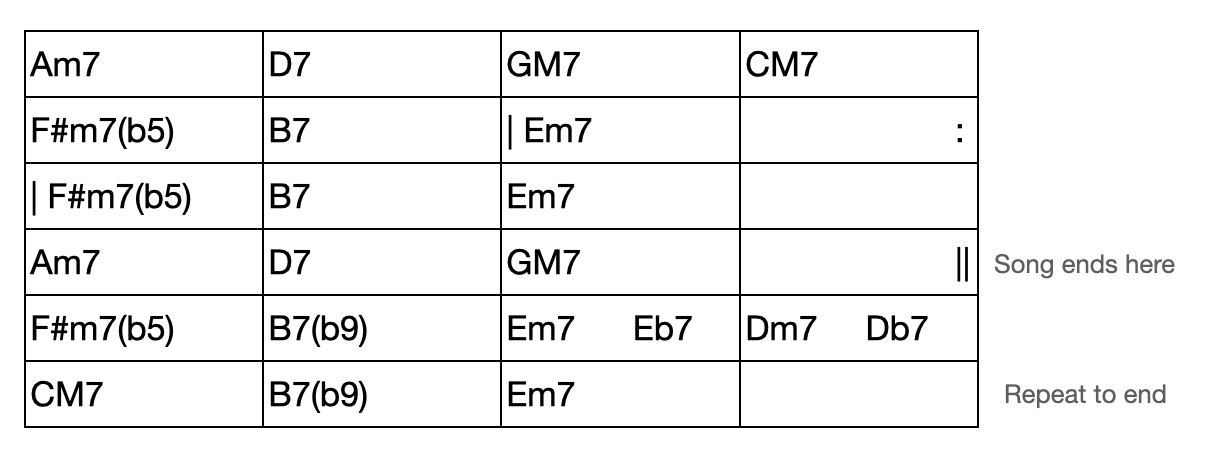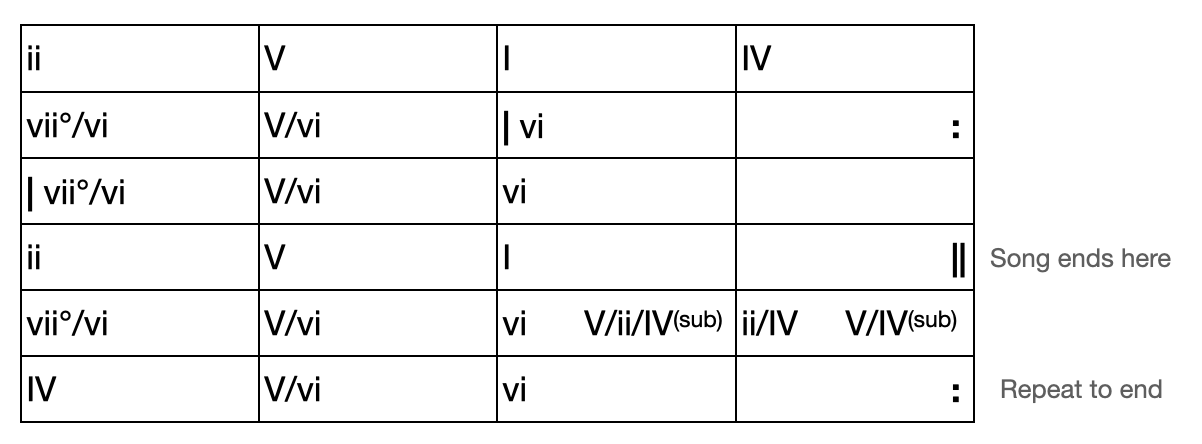Home › Forums › Music Theory › Autumn Leaves
- This topic has 1 reply, 2 voices, and was last updated 2 years, 3 months ago by
 JoeD1.
JoeD1.
-
AuthorPosts
-
-
May 16, 2023 at 3:03 am #343331
There has been a question recently in the context of Autumn Leaves, so I thought I’d provide the harmonic analysis of that song.
Autumn Leaves is an easy song, but it’s beautiful. You have to understand French to fully appreciate the original lyrics by Jacques Prévert and how they complement the melody, but you don’t need to understand French to appreciate the music composed by Joseph Kosma!
Autumn Leaves is a nice first exposure to jazz.Here is the chord grid as provided by the Jazz Real Book.
And here is the harmonic analysis.
The songs begins with a (ii V I IV) in G major.
The next three bars could be interpreted as a (ii° V i) in E (harmonic) minor, but I don’t think there is any real modulation taking place; we’re just switching temporarily to a minor mood in the context of G major. In other words, the tonic chord is still G.
So we interpret Em7 simply as the vi in G major; F#m7(b5) and B7 are then analyzed as secondary dominant chords:
B7 is the V of Em7, and F#m7(b5) is the ii° of Em7, like so:
(vii°/vi V/vi vi)The rest of the song follows the same structure. You will note that the songs ends in G major, not E minor.
There is another interesting bit in bars 19 to 21:
(Em7 Eb7 Dm7 Db7 CM7)
The “target chord” is the CM7 chord at bar 21.
We could re-harmonize this passage as follows:
(Em7 A7 Dm7 G7 CM7)
So Db7 is a substitute for G7 (tritone substitution), which is the V/IV.
Dm7 is the ii/IV and Eb7 is again a substitute for A7 which itself is a secondary dominant for Dm7.
The chosen harmony provides a nice smooth chromatic descent.From an improv perspective, if you want to keep things simple you can make do with the G major scale all the way through (with some caution). You could also use the E blues scale (E minor pentatonic with b5).
Over the B7 chords you should actually use the E harmonic minor scale (which contains a D# instead of a D); in fact, you could use this scale over the entire minor “ii V I” passages.
It’s convenient because the notes of the G major scale and those of the E harmonic minor scale are the same, except for the D#. But of course they have different tonics so they are different scales!
Over the dominant subs, you should use arpeggios, because these chords are not diatonic at all.Voilà. I hope you found it interesting.
-
May 16, 2023 at 8:33 am #343341
Thank you very much. It was quite interesting. This is one of the standard jazz songs I need to learn!
Joe
The sight of a touch, or the scent of a sound,
Or the strength of an Oak with roots deep in the ground.
--Graeme Edge
-
-
AuthorPosts
- You must be logged in to reply to this topic.

